France
Paris
Switch to your local agency
Retour au menu
Inclusive design… a broad topic for a diverse society. Is it still necessary to talk about it? Some will say that the issue is already resolved, but is it really the case? Have brands really taken the issue to heart? Don’t you think that we first need to admit that we are not inclusive to become so? Let’s explore this together.
Let’s start by reminding ourselves: what is inclusive design? It is an approach to design that aims to create products, environments, services, and technologies that are accessible and usable by a wide range of people, including those with specific needs or different abilities.
The main goal of inclusive design is to break down barriers and ensure that everyone, regardless of age, physical ability, gender, or ethnic origin, has the promise of being able to participate fully in society equally.
In an increasingly diverse society, inclusive design has become a major issue; it is an ethical and responsible approach that helps to combat exclusion and promote inclusion. The statistics speak for themselves. According to a recent study by the World Health Organization (WHO), more than 1 billion people in the world live with some form of disability. This would represent a purchasing power exceeding 8 billion dollars according to the Global Economics of Disability report.
Brands that integrate inclusive design into their DNA will not only meet a growing demand but also an ethical necessity while expanding their consumer base but also contributing to creating a more equitable society.
A handful of brands have embraced this philosophy, transcending the limits of the conventional to create products and experiences that touch each of us. Take Apple, the famous technology company is recognized for its commitment to accessibility. Features like VoiceOver, which makes iOS devices usable by people who are blind, demonstrate how technology can be a force for inclusion.
There is also inclusive packaging, which are more than just packaging. They are a way to celebrate diversity and inclusion.
The famous Nestlé biscuit brand, present in Brazil for over 30 years, launches, in collaboration with CBA B+G, a limited edition with illustrations of the alphabet of the Brazilian sign language. This initiative aims to promote learning and inclusion, while bringing a little fun to children.
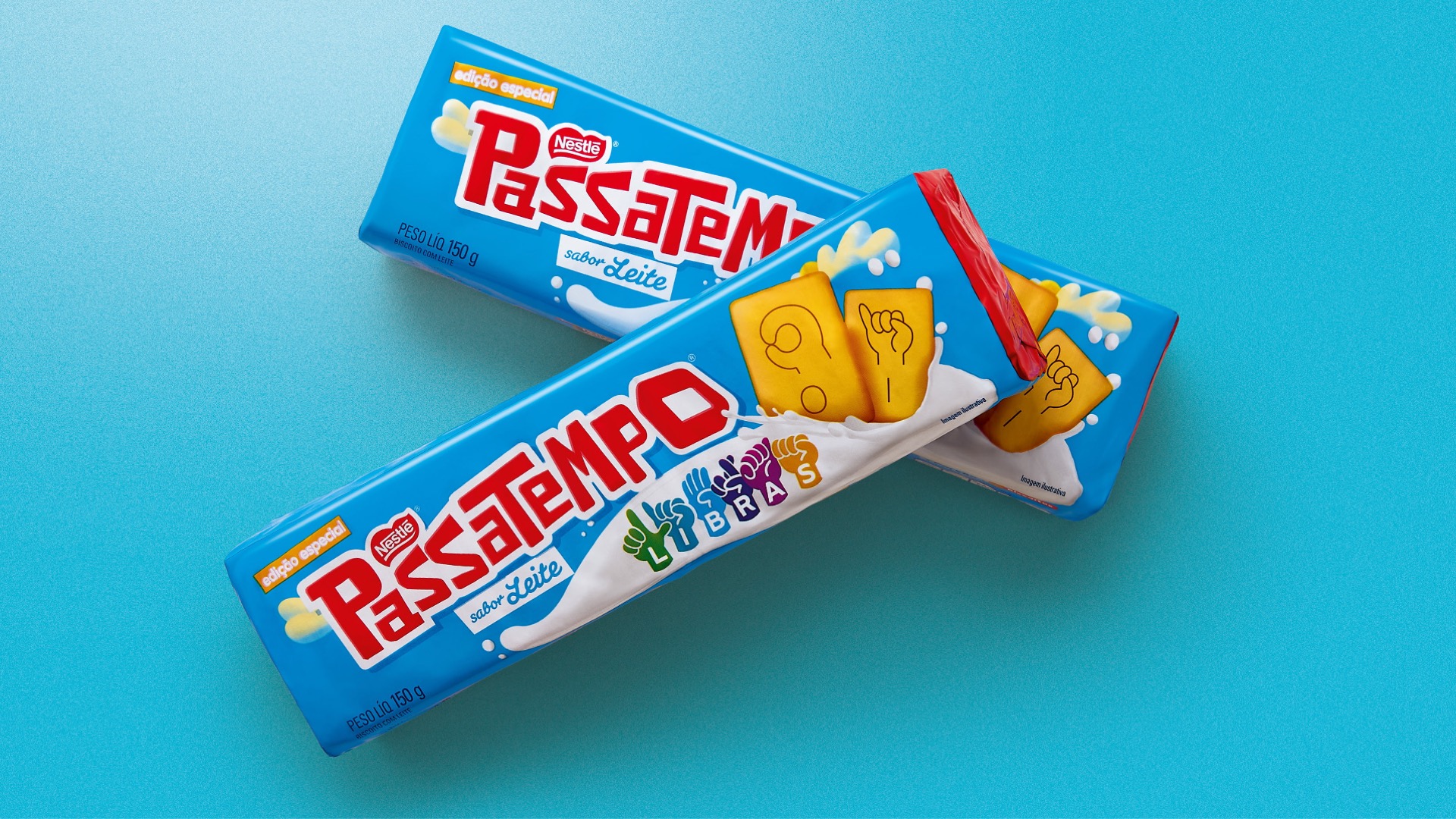
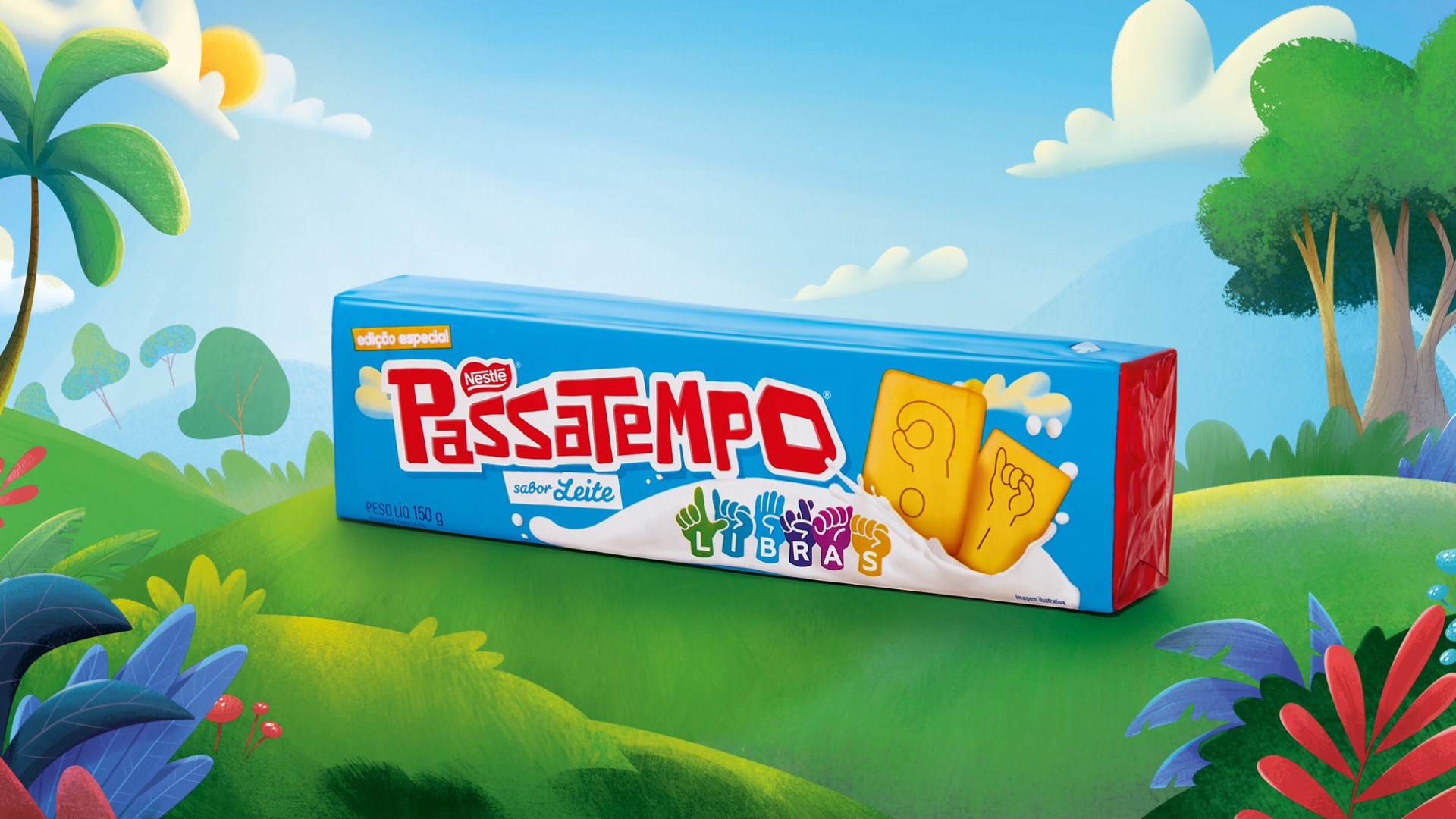
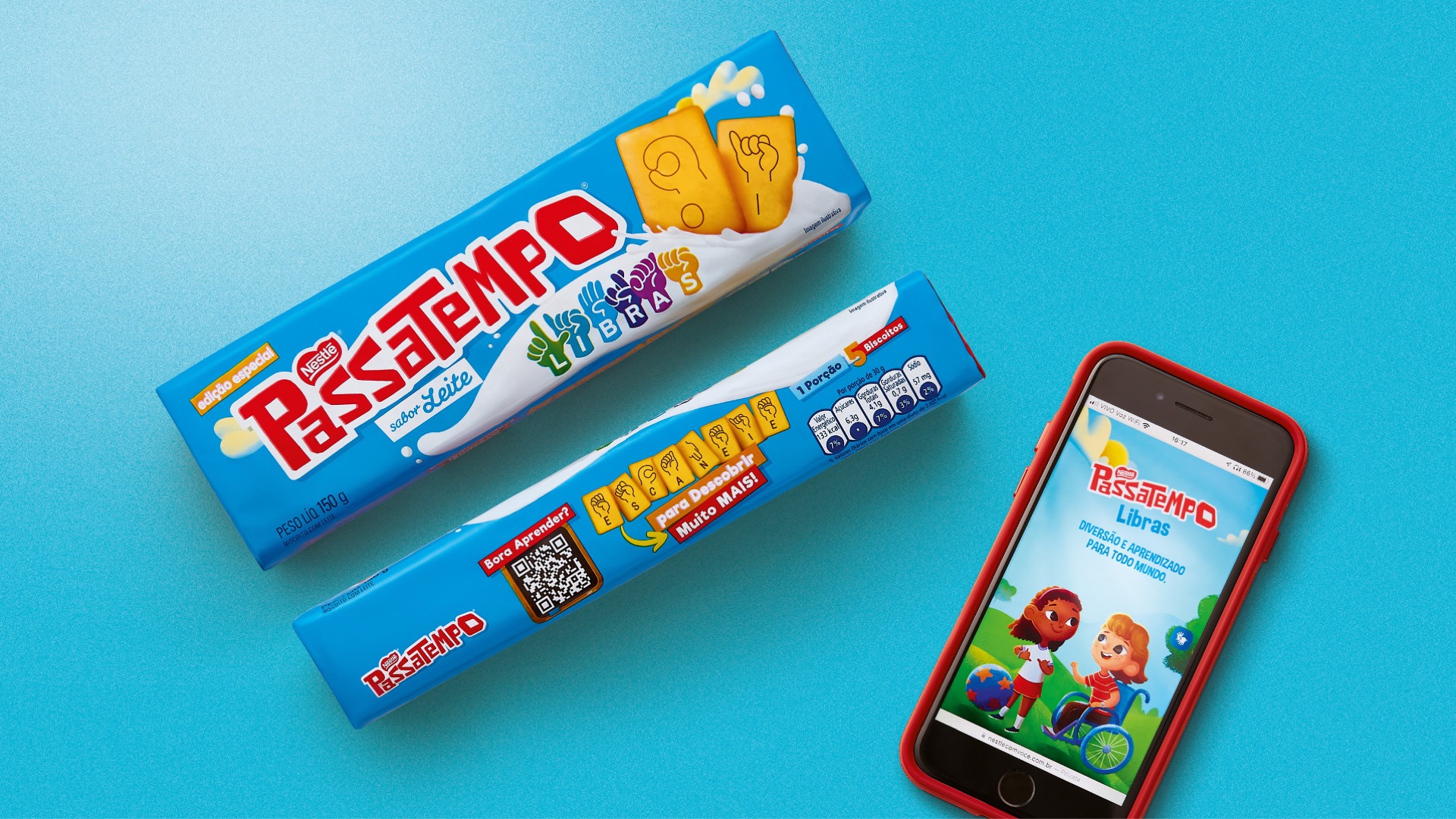
Having or embodied inclusive design is not so simple. Inclusive design is an approach that must be integrated from the beginning of the design process. It is not a feature that can be added or removed at will, but a philosophy that should guide the entire creative process. Indeed, it is not necessary to include this notion once the work is launched; it is recommended to integrate reflection on inclusion from the early stages of design.
One of the major points to start with will be to understand your targets: who are they? Their habits? Their needs? To consider perspectives and experiences other than our own, we can rely on studies or address people directly. The objective is to take advantage of human diversity, by integrating different points of view and learning from each other.
To do this, it is important to understand how people adapt to the world around them, taking the time to put themselves in their shoes. Empathy is an essential skill for designing inclusive products and services.
This gives us the urge to jump on a project led by the LEGO brand. In the UK, the group collaborates with Diversity Roles Models, an organization that educates children about empathy and inclusion. The brand also works with Workplace Pride to measure and adjust LGBTGQ+ representation and inclusion within the group.
This commitment was naturally translated into June 2023, with the marketing of “everyone is awesome” which pays tribute to diversity. The pack consists of a rainbow background and 11 monochrome figurines. Each figurine has its own color and matching wig. The colors are not chosen at random: they take up those of the LGBTQ+ flag, those of the transgender community as well as the diversity of skin colors with black and brown. This set is a beautiful representation of love and open-mindedness. It encourages children to accept and celebrate differences. 🌈
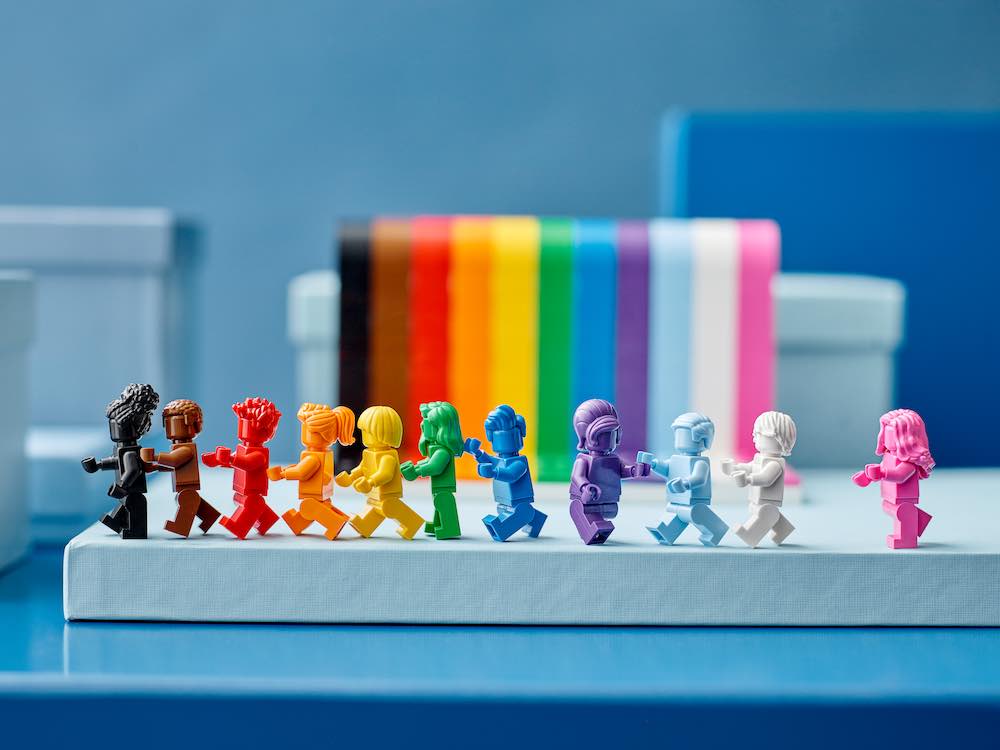
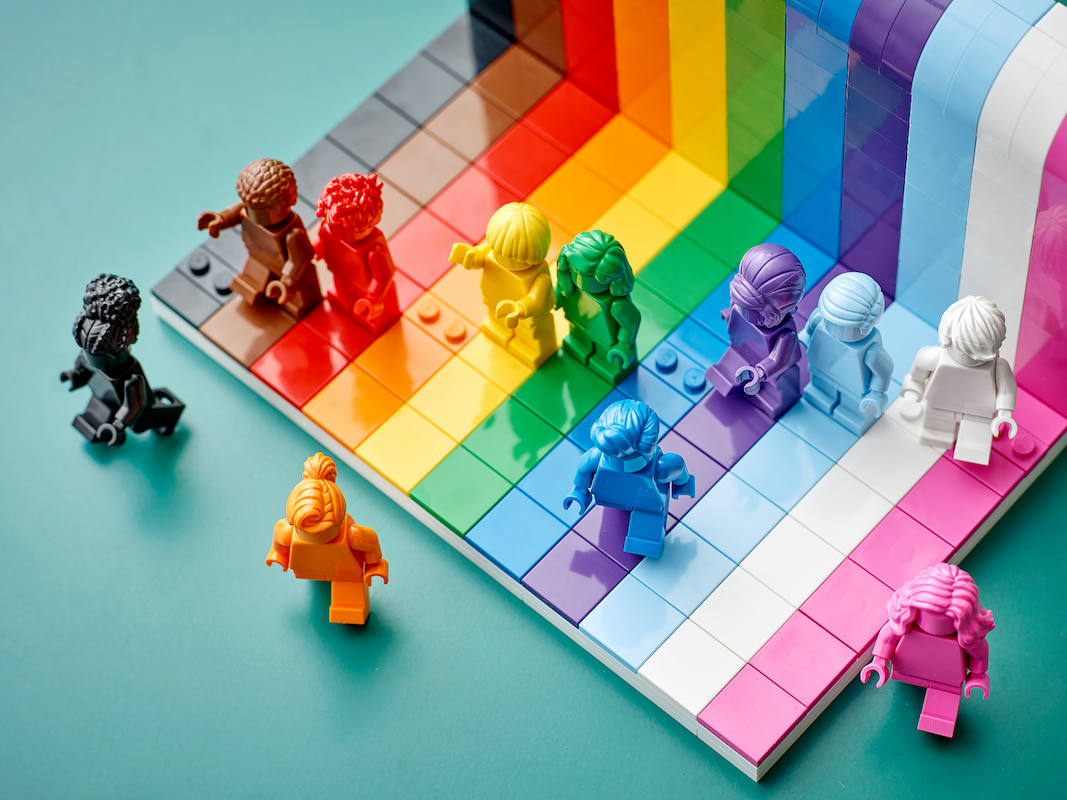
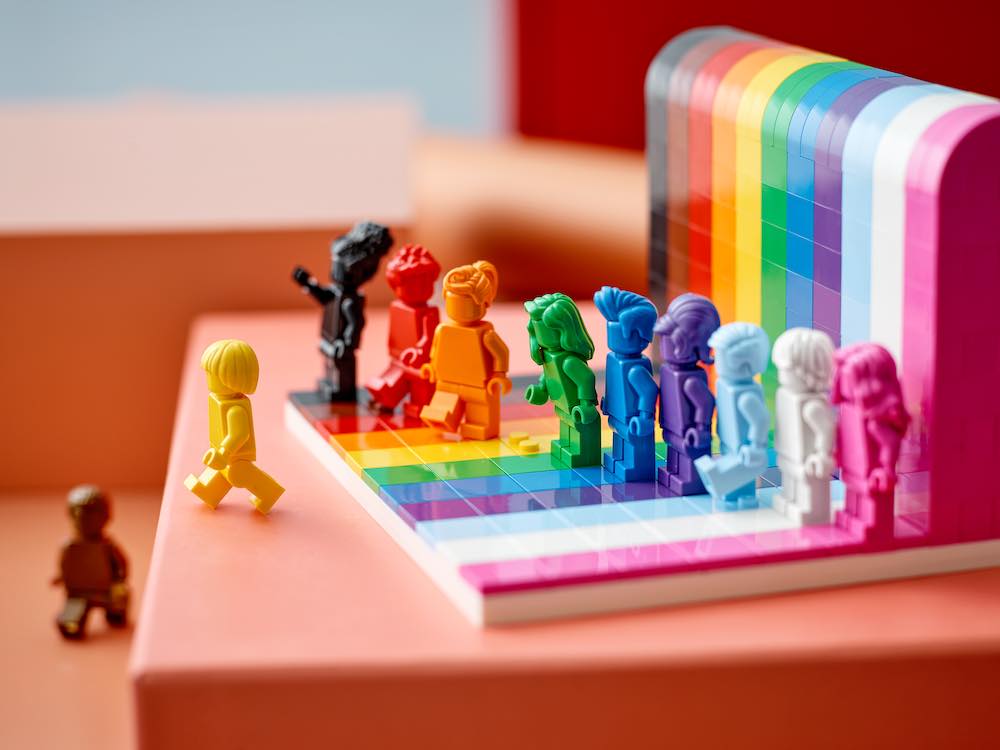
At CBA, we don’t see inclusive design as a trend, but as a responsibility. Each member of our team is trained to understand the diverse needs of our clients and to integrate them into our creations. Our creative process is based on inclusion, ensuring that our campaigns, websites, and communication materials are accessible to everyone.

The latest project from our studio CBA B+G, the brand strategy for an innovative company driven by agro-ecology, Raízes do Campo is a concrete illustration of our commitment. We created the brand voice, with the tone of voice, manifesto, and storytelling of the brand. It was a real challenge to define the declaration of intent for the different links in the chain, with an inclusive message, to cover the diversity of stakeholders (producers, cooperatives, retailers, end consumers, as well as employees and investors).
Many brands aspire to create inclusive projects, communicate with a wide range of people and reach different audiences. However, this aspiration can sometimes prove to be a major challenge. As mentioned earlier, there are steps to follow before designing a truly inclusive project. It is important to note that simply stating “I want to be inclusive” is not enough.
Take the example of the oui.sncf app, which transformed into sncf-connect overnight! A brutal launch, accessibility was not thought out in the smallest corners, and the result? “Disappointing”, “Difficult to read”, “Not great”, “Frustrating”, “Not at all up to par”, “The least successful update of the century”, “A disaster”, … Dissatisfied users and add to that a lack of readability, you will get a flood on social networks and a failed launch. However, despite some setbacks, the brand has been able to question itself and improve its application over the months so that it can be accessible to the greatest number.
Privacy Overview
| Cookie | Duration | Description |
|---|---|---|
| aka_debug | This cookie is set by the provider Vimeo.This cookie is essential for the website to play video functionality. The cookie collects statistical information like how many times the video is displayed and what settings are used for playback. | |
| pll_language | 1 year | This cookie is set by Polylang plugin for WordPress powered websites. The cookie stores the language code of the last browsed page. |
| Cookie | Duration | Description |
|---|---|---|
| _gat | 1 minute | This cookies is installed by Google Universal Analytics to throttle the request rate to limit the colllection of data on high traffic sites. |
| YSC | session | This cookies is set by Youtube and is used to track the views of embedded videos. |
| Cookie | Duration | Description |
|---|---|---|
| _ga | 2 years | This cookie is installed by Google Analytics. The cookie is used to calculate visitor, session, campaign data and keep track of site usage for the site's analytics report. The cookies store information anonymously and assign a randomly generated number to identify unique visitors. |
| _gid | 1 day | This cookie is installed by Google Analytics. The cookie is used to store information of how visitors use a website and helps in creating an analytics report of how the website is doing. The data collected including the number visitors, the source where they have come from, and the pages visted in an anonymous form. |
| vuid | 2 years | This domain of this cookie is owned by Vimeo. This cookie is used by vimeo to collect tracking information. It sets a unique ID to embed videos to the website. |
| Cookie | Duration | Description |
|---|---|---|
| IDE | 1 year 24 days | Used by Google DoubleClick and stores information about how the user uses the website and any other advertisement before visiting the website. This is used to present users with ads that are relevant to them according to the user profile. |
| test_cookie | 15 minutes | This cookie is set by doubleclick.net. The purpose of the cookie is to determine if the user's browser supports cookies. |
| VISITOR_INFO1_LIVE | 5 months 27 days | This cookie is set by Youtube. Used to track the information of the embedded YouTube videos on a website. |
| Cookie | Duration | Description |
|---|---|---|
| CONSENT | 16 years 7 months 21 days 10 hours | No description |
| cookielawinfo-checkbox-functional | 1 year | The cookie is set by GDPR cookie consent to record the user consent for the cookies in the category "Functional". |
| cookielawinfo-checkbox-others | 1 year | No description |